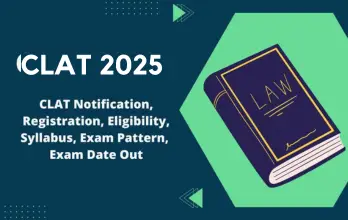Maybe you've thought, "I will skip the quantitative section this time," or firmly declared, "No more quant torture for me!" If these thoughts resonate, consider this blog your trusty companion. It's here to unravel the complexities of CLAT's quantitative techniques.
On this intellectual journey, we'll dive deep into quantitative techniques, peeling away the layers of complexity to reveal its essence. Don't worry, you're not alone on this quest. You'll gain an arsenal of valuable tips and tricks, turning your encounter with quant into a voyage of discovery.
Imagine this blog as a mapmaker's masterpiece, navigating the uncharted territories of CLAT's quantitative landscape. With each read, you'll navigate a challenging terrain that gradually unfolds, offering a clearer path to understanding and mastery.
Together, we'll embark on a treasure hunt for strategies, each more valuable than the last, unlocking the gates to quantitative prowess. This blog will weave insights and guidance into a tapestry of wisdom, guiding you through the labyrinth of quantitative techniques. As we journey, our focus remains on the horizon of the CLAT 2026 exam. Prepare with tips and tricks that promise positive outcomes, This blog will be your guiding light, leading you through uncertainty toward enhanced understanding.
So, let's set sail on this shared expedition into the uncharted waters of quantitative techniques. Brace yourself for an exploration that reshapes your perspective, instills determination, and empowers you to conquer challenges. With the winds of knowledge propelling us, armed with strategic insights, we navigate the sea of quantitative techniques with purpose and resolve. The voyage beckons – toward triumph and excellence!
Importance and Relevance of Quantitative Techniques in CLAT
Consider this staggering statistic: an annual throng of 60,000 to 70,000 aspirants partake in the fiercely competitive CLAT examination. A contest that pits students against each other for a mere 2500 coveted seats within the NLUs. The allure of these prestigious institutions is undeniable, propelling aspirants toward their dream of legal enlightenment. Now, let's pause and reflect on the gravity of the situation. In this intense battle of wits, each section, each mark, assumes a crucial role in propelling candidates toward their aspirations.
Now, picture a scenario where you and your competitor share a mutual distaste for quantitative techniques. In this equation, your adversary decides to abandon this section, while you adopt a different approach. You decide to grasp the fundamentals of a few basic and uncomplicated chapters, equipping yourself to confidently tackle at least 7 to 8 straightforward questions. As the rest of the sections yield more or less comparable outcomes for both of you, here's where the paradigm shifts. Your deliberate effort to secure those seemingly insignificant 7-8 marks in the quantitative technique section propels you leaps and bounds ahead of your competitor. It's a game-changer that transforms your rank and drastically enhances your prospects of securing admission into your dream law school.
This vignette underscores the undeniable importance of quantitative techniques. It serves as the ace up your sleeve, the final flourish that elevates your CLAT score. This section is your ultimate score booster, a potent ingredient that can catapult you into the echelons of top NLUs. The sheer gravity of this realization underscores the irrefutable fact: you simply cannot afford to overlook or dismiss the significance of this seemingly modest segment.
The journey ahead involves a strategic approach, a tactical selection of chapters to study, and the art of maximizing output while minimizing effort. It's a realm where intelligence and ingenuity reign supreme, where the wise outmaneuver the rest through their shrewd strategies.
So, while quantitative techniques may not hold the limelight, they wield immense power to shape your CLAT destiny. It's not just about numbers; it's about seizing every opportunity to inch closer to your dreams. As you delve into this section armed with smart strategies, remember that this unassuming area of study can make all the difference, etching your name among the triumphant few who ascend to the zenith of NLUs.
Basic Concepts and Fundamentals of Quantitative Technique:
To make this foundation strong, you need to put in effort. Understand and practice these basic concepts regularly. It's like polishing a gem – with time and practice, something remarkable happens. Those tricky quantitative questions that seemed tough started to look more manageable. It's like a magic trick, and the secret behind it is your confidence. When you understand the core concepts and fundamentals well, your confidence grows, and that's the secret to doing well.
Now, here's the important question – how do you build this strong foundation? The answer is simpler than you might think: "LawEx by Smartkeeda," a YouTube channel. This online treasure chest is packed with top-quality CLAT classes, and they're free. It's like a guiding light in a maze, helping you understand the basic concepts. As you watch these classes, you'll see those once-confusing ideas become clear and solid in your mind.
Once you have this knowledge, you're ready for the next step. It's like you've got a flashlight to navigate a dark path. Now, you can explore deeper. Open standard textbooks or online e-books – they're like road signs that guide you in your practice. With the knowledge you gained from LawEx, you start to solve exercises and problems. It's like putting your skills to the test and making them stronger.
This approach brings great results. You not only understand quantitative techniques better, but you also get ahead of others. While your friends might be struggling, you'll feel confident because you've got a strong grasp of the basics. The journey to conquer the quantitative section becomes exciting and satisfying. It's like climbing a challenging mountain and reaching the top feeling proud.
Think of this learning process as a beautiful symphony. "LawEx" is like the mentor, guiding you through the complexity of concepts. You play your part by confidently solving problems and creating a harmonious melody of understanding. The time you invest, the effort you show – it all comes together like a grand finale. You'll master quantitative techniques, paving the way for success in the CLAT exam.
So, don't see this as a dull task. Imagine it as a thrilling adventure, a journey to improve yourself. Embrace the challenge, dive into learning, and watch as the mysteries of quantitative techniques turn into solvable puzzles. With LawEx as your mentor and a strong foundation, you're all set to unleash your true potential and shine in the dynamic world of CLAT's quantitative techniques.
Types of Questions in CLAT Quantitative Techniques:
A noteworthy observation from past years' papers is the consistent presence of certain selected topics. These recurring themes form the backbone of the quantitative technique section. Recognizing this trend can prove advantageous, particularly if time is limited or certain areas feel challenging. Beginning with these topics can set the stage for a solid baseline score.
Among the prominent themes, data interpretation – including case lets – stands out prominently. A mastery of this aspect is pivotal, given the substantial number of questions that stem from it. It forms an integral part of the foundation for success in this section.
Embarking on the learning journey, commence with fundamental arithmetic topics such as percentages, ratios and proportions, averages, and profit and loss. These concepts provide a scaffold upon which more complex ideas are built. Transitioning to the critical realm of data interpretation, especially caselets is the subsequent step. A majority of the questions stem from these areas, underscoring their significance.
As this solid foundation takes root through a thorough understanding of concepts and diligent practice, the progression towards subsequent arithmetic domains such as Simple Interest and Compound Interest, Time Speed and Distance, Boat, and Stream problems, Mensuration, and Probability becomes logical. These topics encompass a substantial portion of the CLAT quantitative technique syllabus, and remarkably, most of them are already familiar from our 10th-grade education.
The intrinsic familiarity of these concepts dispels any notion of insurmountable difficulty. With unwavering effort and consistent practice, achieving commendable results is well within reach. Additionally, a prudent strategy involves an attentive analysis of past CLAT exams, focusing on the question types that recurrently appear in the quantitative technique section. This vigilant observation ensures alignment with the examination's expectations, enhancing the efficacy of one's preparation. So, with perseverance, practice, and astute observation, the journey transforms into a rewarding endeavor, culminating in substantial and meaningful results.
Tips and Strategies for Mastering CLAT Quantitative Techniques
In this pursuit, consider the following comprehensive list of essential tips and strategies that will not only facilitate your preparation but also elevate your performance to new heights:
Free Online Coaching Classes for CLAT 2026 on LawEx
Concept Clarity:
- Begin by establishing a solid understanding of the fundamental concepts in each topic.
- Build a robust foundation before delving into complex problem-solving techniques.
- Master arithmetic formulas and core conceptual chapters such as percentages, profit and loss, ratios and proportions, boat and stream, and simple and compound interest.
Data Interpretation (DI) Mastery:
- Grasp the concepts of Data Interpretation early on, as it holds significant weightage in the exam.
- Dedicate ample time to understand and excel in this section, including caselet based DI.
- Practice Diligently:
Regular practice is the key to unlocking your quant potential.
- Engage in consistent practice to familiarize yourself with a wide array of question types.
- Enhance your problem-solving speed and accuracy through dedicated practice sessions.
Effective Time Management:
- Develop impeccable time management skills to optimize your performance during the time-sensitive CLAT exam.
- Efficiently allocate time to different sections and questions to maximize your overall score.
Mock Test:
- Engage in a series of mock tests to simulate real exam conditions and identify your strengths and weaknesses.
- Utilize mock tests as a diagnostic tool to refine your strategies and improve your performance over time.
Strategic Shortcuts:
- Acknowledge the value of strategic shortcuts in solving complex problems swiftly.
- Combine shortcut techniques with stepwise methods to tackle a wide range of questions effectively.
Thorough Review:
- After each mock test or practice session, meticulously review your responses.
- Identify areas of improvement, analyze time-consuming segments, and rectify misconceptions.
Maintain Calm & Composure:
- Cultivate a calm and composed demeanor during the actual exam and practice sessions.
- Approach each question with confidence, drawing strength from your thorough preparation.
Consistency is Key:
- Adhere to a consistent study routine with Best Study material for CLAT that accommodates regular practice and revision.
- The unwavering rhythm of consistency propels you towards quant mastery.
Stay Informed:
- Stay updated with the latest developments and changes in the CLAT examination pattern.
- Remain attuned to current affairs and contemporary issues to enrich your preparation.
Guidance and Mentorship:
- Seek guidance from mentors and educators to clarify doubts and enhance your understanding.
- Embrace mentorship as a powerful tool to navigate through challenging concepts.
Incorporating these insightful strategies and expert recommendations into your preparation regimen empowers you to surmount the quant challenge with confidence and finesse. Let these guiding principles serve as your compass, steering you towards a triumphant performance in the quantitative technique section of the CLAT exam.
Common Challenges and How to Overcome Them
The challenges start with a common hurdle: understanding the basic concepts. Imagine solving puzzles without knowing the rules; that's how some feel when faced with quantitative problems. So, the first step is to build a strong foundation. Dive into online resources like video lectures and practice materials. Textbooks are your guiding stars too. Blend these with practice questions from e-books and quizzes, or directly from textbooks. The result is an incremental triumph, where each day unveils a better version of you.
Then there's the race against time. CLAT is a time-bound exam and speed matters. Imagine racing a clock while solving puzzles. To tackle this, practice with a timer. Set time limits for each question. Find shortcuts, like secret passages in a maze, to save time. Consistent practice is the key to mastering this skill.
Fear can be another tough opponent. Think of the quantitative section as a giant guarding the castle of success. It often scares students. The remedy? Change your perspective. Start with easy questions, and gradually tackle harder ones. Each small victory boosts your confidence. Mentors and online resources can guide you through this journey.
Without a clear strategy, even the bravest falter. You need a map. A systematic approach based on importance and proficiency is crucial. Practice within a time limit to fine-tune your strategy. This blueprint lights up your path through uncertain terrain.
Insufficient practice is like setting out on a journey without knowing the route. Solving questions from previous years familiarizes you with the path. This prepares you for the challenges ahead, giving you confidence and insights.
These challenges form the threads in the fabric of the CLAT quantitative section journey. Overcoming them weaves your potential into the picture. As you conquer each challenge, your quant skills become stronger, colored by experience. So, cast away your worries, steer with a clear plan, and follow the guidance of mentors. Soon, you'll navigate this sea of challenges, reaching the shores of victory in the quantitative section.
Practice and Mock Tests for CLAT Quantitative Techniques
The journey of conquering the CLAT quantitative section is akin to sculpting a masterpiece, where practice and mock tests serve as the chisels that transform uncertainty into a symphony of certainty. Just as a gem is meticulously cut and polished to reveal its brilliant facets, mock tests refine and magnify the shine of your preparedness, making them an inseparable duo in the CLAT voyage. The profound significance of these twin pillars cannot be understated, for they hold the key to unlocking your quant prowess and paving the way to success.
Quoting the sage words of the LawEx (Smartkeeda) faculty, Practice, and mock tests are the twin pillars that uphold your quant prowess, elevating your confidence and competence in the CLAT journey. They act as the navigational compass that charts your course through the labyrinthine quant landscape, guiding you toward your destination of triumph.
Akin to an architect blueprinting a grand edifice, your preparation begins by laying the foundation of practice. The process commences by identifying the high-value topics nestled within the syllabus. Armed with this roadmap, the journey unfolds as you delve into the heart of each topic. Conceptual clarity is your lodestar, and this understanding is cultivated through a multidimensional approach. Seek lectures, practice materials, and online resources that unravel the intricacies of each chapter. Then, immerse yourself in a crucible of time-bound practice. With each question, you endeavor to whittle down the time taken to solve, honing your efficiency.
The art of practice is multifaceted, for it not only sharpens your skills but also nurtures your confidence. Variety is the palette through which you paint your success. Engage with a diverse array of problems, dissecting each concept from different angles. This comprehensive approach ensures that you are equipped to tackle any question that emerges from the chapter's depths. As the mosaic of your preparation takes shape, the next phase beckons – topic-wise and section-wise mock tests.
These mock tests are akin to dress rehearsals before the grand performance. They serve a dual purpose – a diagnostic tool that highlights the weaker threads in your tapestry and a crucible where your time management skills are refined. The beauty of these mock tests lies in their ability to simulate the actual CLAT experience. The clock ticks, the pressure mounts, and yet, amidst this orchestrated chaos, you learn to keep your composure. Weak chapters are illuminated like beacons, guiding your efforts to bolster them. Your speed and accuracy, like twin navigators, find their equilibrium in these simulations.
We can say that the journey through the CLAT quantitative section is a symphony composed of the harmonious interplay of practice and mock tests. Like twin celestial bodies, they exert their gravitational pull, shaping your quant destiny. Practice molds your foundational skills, while mock tests are the crucible where these skills are forged into a formidable weapon. Together, they create a synergy that elevates your competence, emboldens your confidence, and steers you toward the shores of success in the CLAT examination. So, embrace these twin pillars, let them be your guiding lights, and navigate the intricate maze of quant challenges with unwavering resolve.
How CLAT Quantitative Techniques Relate to Law Studies
The quantitative techniques section of CLAT, often sidelined, is akin to a mirror reflecting the very essence of analytical prowess indispensable for the intricacies of legal practice. As future lawyers, the ability to dissect, analyze, and discern patterns within complex data is a skill set that harmonizes seamlessly with the demands of legal cases. Consider the scenario of a modern legal expert: a digital age alchemist who sifts through a myriad of data points, extracting insights and crafting compelling narratives. In this era defined by data-driven insights, a strong foundation in quantitative techniques becomes more than a skill—it metamorphoses into a tool that empowers you to unearth the pearls of wisdom embedded within datasets.
Beyond the veneer of numbers, quantitative techniques contribute to a broader cognitive landscape. It nurtures the growth of critical thinking and hones the precision of quantitative thought processes. The world of law often presents challenges akin to intricate puzzles, where the ability to unravel complexities and formulate well-structured solutions is a prized asset. Herein lies the profound synergy between quantitative techniques and law studies—both realms are arenas where adept problem-solving blooms, each contributing its unique hue to the tapestry of legal expertise.
As you embark on your journey toward mastering quantitative techniques, it is crucial to recognize its integral role in the trajectory of your legal career. Far from being an isolated fragment of study, it seamlessly intertwines with the very fabric of your future profession. The quantitative acumen cultivated within CLAT's embrace will evolve into a steadfast companion, accompanying you as you navigate the multifaceted landscape of legal intricacies.
Therefore, the symbiosis between quantitative techniques and the field of law extends far beyond the realms of mere examination preparation. It forges a path toward holistic development—a path paved with sharpened analytical abilities, heightened problem-solving acumen, and an enriched cognitive toolkit. Thus, the call to master quantitative techniques resounds not only within the corridors of CLAT but reverberates across the entirety of your legal journey, promising dividends that extend far beyond the threshold of the examination hall.
If you want to be perfect in Logical and Legal Reasoning, definitely read this blog. How to Improve Logical and Legal Reasoning for CLAT 2026

Author : Saurabh
Greetings! I'm Saurabh, an aspiring writer fueled by a deep passion for self-discovery through the written word. Along my journey, I have stumbled upon the enchanting realm of blog writing, which has become my true calling. As an avid wordsmith, nothing brings me greater joy than imparting knowledge and assisting students in their preparation for competitive exams. I invite you to join me on this thrilling expedition as we venture into the vast ocean of possibilities that writing offers. Stay connected to receive invaluable insights and expert guidance in every blog post. Together, let's unlock our full potential and embark on this educational adventure that awaits us!
FAQ’s
How many questions are usually asked in the Quantitative Techniques section?
The CLAT exam offers candidates the flexibility to manage time based on their strengths and limitations, without any sectional timing constraints. To ensure effective time management and maintain a balance between sections, allocating 10-15 minutes to the Quantitative Techniques section is recommended.
The CLAT exam offers candidates the flexibility to manage time based on their strengths and limitations, without any sectional timing constraints. To ensure effective time management and maintain a balance between sections, allocating 10-15 minutes to the Quantitative Techniques section is recommended.
To excel in the Quantitative Techniques section of the CLAT exam, adopt a strategic approach: grasp core concepts, seek expert guidance, utilize online resources and practice materials, refine skills through consistent practice, and enhance speed and accuracy via mock assessments.
The Quantitative Techniques section is perceived by many students to entail moderate to difficult-level questions. However, with a disciplined and unwavering commitment to regular practice, this section can be effectively managed, leading to improved proficiency and confidence in tackling its challenging questions.





